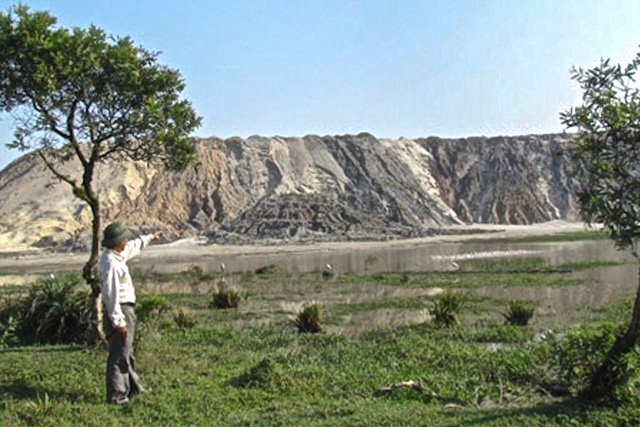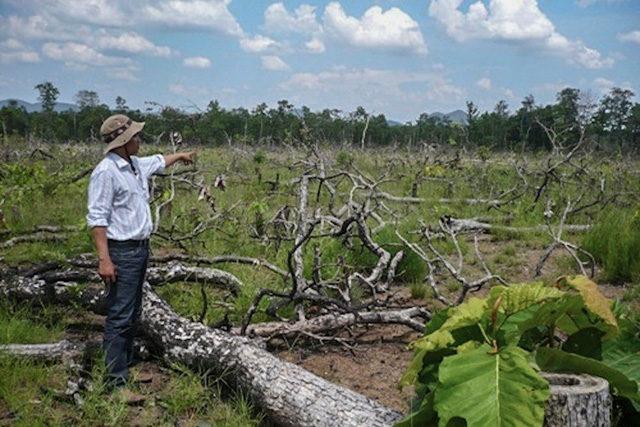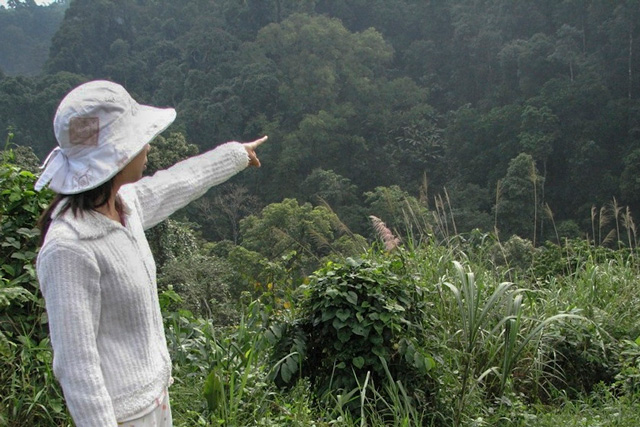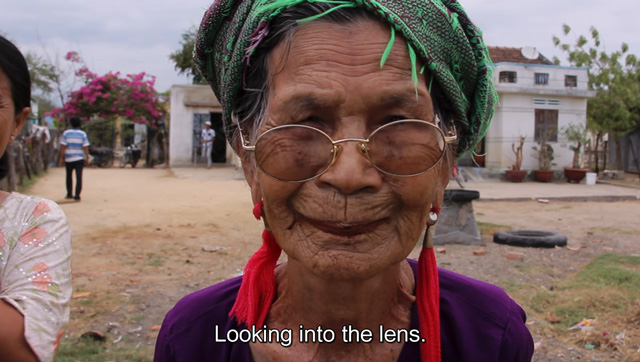

by IZABELLA SCOTT
One seasonably cold afternoon in Rotterdam, during the International Film Festival (IFFR), I found refuge in an exhibition at the Kunsthal. Blackout (2019) included work by 11 artists using 35mm Kodak slide projections, a medium that has become obsolete since Kodak discontinued production of its 35mm cameras in 2004. I watched a series of images flicker on one wall: a man pointing to a gap between the trees; a woman gesturing down an empty road; two men on a bridge, motioning towards the foliage. The strange, surreal images that make up Landscape Series #1 (2013) were collected by the Vietnamese film-maker and media artist Nguyen Trinh Thi (b1973, Hanoi). They were taken from newspaper reports, and evince a photojournalistic trope. To show they are bearing witness, reporters arriving on the scene step into the frame and point to the unfolding events. The images have the quality of a story or flick book: the repeated figure, moving through different landscapes, always pointing at something. They seem to gesture towards the failure of images, and remind us of what is beyond the archivist’s grasp.
Thi is best known for her films and I later watch three of them, all of which explore cultural histories and interrogate acts of looking. After living in the US for 10 years, Thi returned to Vietnam in 2007, hoping to become a film-maker. She has since been documenting aspects of local culture, blending journalism, ethnography and theory. The exquisite documentary Love Man, Love Woman (2007), made on her return to Vietnam, follows a famous spiritualist medium in Hanoi and looks at the relative invisibility of gay culture in contemporary Vietnam. Letters from Panduranga (2015), made some years later, is a document of the Cham indigenous people of the south, mediated through a set of fictional letters, and it was shortlisted for the IFFR’s Tiger Short Film Award 2016. Her most recent film, Fifth Cinema (2018), currently exhibited at the 9th Asia Pacific Triennial of Contemporary Art in Brisbane, is more theoretical and attempts to establish a new order of looking, building on the New Zealand film-maker Barry Barclay’s idea of the indigenous gaze.
I caught up with Thi to talk about female spirits, regional journalism and the ecological destruction of Vietnam’s heartlands.
Izabella Scott: The images in Landscape Series #1” (2013) show men and women pointing to something – a river, a group of trees, the dirt at the roadside. They are taken from newspaper reports, a trope in regional journalism, a way of showing the scene of an event. The person in the photograph is pointing to “where it happened”. Are these kinds of images particular to Vietnam?
Nguyen Trinh Thi: Images such as these are very popular in Vietnam, and they may even be particular. It’s a tradition practised by local photojournalists as they arrive on the scene and try to document what has occurred. The images are used as evidence to show the journalist has borne witness. Until I started to collect these images, I didn’t think of it as a phenomenon as such. But soon I began to see them everywhere in local papers. I collected several hundreds of these images from the internet, all of which show people pointing to something in the landscape. I was thinking of these landscapes as a quiet witness to history.
[image6]
IS: I saw these images exhibited in a slideshow. Seen in sequence, they might be read as clues in a story. They seem to point towards a relationship between journalism and fiction. Are you interested in unravelling genres, and showing how journalism, an ostensibly objective form, is full of subjectivity?
NTT: I have a background in journalism: I studied at the University of Iowa in the US in the late 1990s, and then worked for a few different publications, including the Vietnam Economic Times in Hanoi and Reuters in New York City. Later, when I began working as a film-maker and media artist, I had time to compare and reflect on different approaches to documenting the world. I have never believed any approach to be pure. To take journalism and art: they are never simply objective or subjective endeavours. I’m always mixing categories – I think I’m interested in the lines between. As a journalist, I was always more interested in subjective journalism and later, as a non-fiction filmmaker, I began to edit and select archival sources in a way that presented them as fiction. I suppose, ultimately, my films are also about this process.
IS: One of your first films, Love Man, Love Woman (2007), follows Luu Ngoc Duc, a spiritualist medium in Hanoi. Duc often dresses in women’s clothes – what might be described as drag – and channels different female spirits. Here, you seem to step between documentary film, ethnography and perhaps something tending towards fiction.
NTT: I consider this my first film. In 2005, I took a course in ethnographic film at the University of California, San Diego, and I realised how much I loved film-making – researching, shooting, editing, the whole process. I was willing to drop everything I’d studied before, and to fully invest in film-making. At the same time, having lived in the US for 10 years, I was ready to return to Vietnam, as I realised that was where I belonged. So, it became clear that I would return to Vietnam and start making films.
[image3]
One topic that always piqued my curiosity was the Dao Mau – Mother Goddess – religion, which for several hundred years has been the only place in Vietnamese society where transgender and homosexual people have found community and expression. I knew it was a popular indigenous religion, and I could recognise Dao Mau practitioners by the way they dressed – but I didn’t know much else. I began a period of research, reading as widely as I could on this religion, and also more generally about homosexuality in Vietnam. I couldn’t find much written about the intersection, and most of the writing about homosexuality looked at health, rather than culture. For a few months in 2006, I researched and, at the same time, shot film in and around Hanoi. I met people from the Dao Mau community and spoke to them. When I met Duc, I just knew he would be my character. I didn’t need to find anybody else.
IS: Duc appears in beautiful silk garments, with jewellery around his neck and flowers in his hair, not unlike a pantomime dame. At the spiritual ceremonies and, indeed, throughout the film, I noted that he also speaks in a very florid, poetic Vietnamese, which is noticeable from your subtitles. It’s flowery and even perhaps camp, things such: “Oh heavens, great Lily!” Does this come from a tradition of Vietnamese poetry, or is this unique to the Dao Mau?
NTT: I love his language! It was so difficult to subtitle, I even held back as I tried to make it manageable. Duc’s breadth of words is remarkable. Sadly, this kind of Vietnamese is dying out. His knowledge and language come from a long tradition within his family: his grandmother was also a spiritualist medium, and the stories and folk traditions he knows have been passed on through generations. Duc himself is also a teacher of literature. I heard he was well known for teaching The Tale of Kieu, which is a 19th-century epic poem, and one of the most famous works of literature in Vietnam. It is very important to our culture, and its author Nguyen Du is perhaps something like your Shakespeare. Many people would have this book in their home. The poem is extremely long, but once upon a time, many people could recite the whole poem. There’s still a tradition of using the tales for divinatory purposes: people open the book at random and look for an omen. And this poem is very much tied up with Duc’s use of language. He often quotes from this poem when he speaks.
IS: Do people like Duc still exist, more than 10 years on? Is the Mother Goddess religion a dying culture, too?
NTT: Actually, quite the opposite is true: this religion, and especially its rituals, are flourishing. I think it’s related to economics. Vietnam is largely an informal economy, so many people work for themselves. They have their own businesses, and they don’t work for companies, governments or institutions. Because of this, their fortune, or their businesses, are very susceptible to what they would think of as luck, or as good or bad fortune. So within this kind of informal economy, people are looking for something to rely on, something to trust – and it’s these spiritualist mediums who take up the mantle. Their followers believe the gods or goddesses will help them.
IS: Would any of Duc’s community identify as gay or queer? Did you meet any people in the Dao Mau community who were looking for words that might name gender or sexual nonconformity?
NTT: If you asked them, most would say that being gay or homosexual and having the female spirit root are two different things. When I made this film in 2006, most of the local terms I heard tended to describe the outward expressions in terms of gender-crossing rather than sexuality. For example, “dong co” is used to identify both a male medium with the spirit root of a princess and an effeminate man. Likewise, “bong” (meaning shadow), which is short for “bong lai cai” (feminine shadow) is another term for a transgendered or effeminate man. I made this film more than 10 years ago, so much has changed in Hanoi since then. There is much more awareness of the LGBT movement. Vietnam’s first gay pride campaign took place in 2012.
[image8]
IS: In Letters from Panduranga, a film you made in 2015, you combine portrait shots of the Cham people, who are the indigenous people of Panduranga (a province in the south of Vietnam) with landscape shots. One of the questions in the film is how to document these people, whose culture is being lost. At one point, your voiceover says: “I’ve been trying different ways of making a portrait.”
NTT: In that film, I was thinking a lot about the relationship between artists and their subjects. In terms of the Cham people, I asked myself: What would be the right distance to film and observe? I am not part of the Cham community. I am an outsider, somebody who is coming with a camera to make a documentary. I tried to find different ways to approach this community. I made closeups or intimate portraits, and then distant landscapes or wide shots. In some ways, I felt very uncomfortable making this film: I didn’t want to speak on behalf of the Cham, and several times I considered dropping the project. And yet, I felt that the story – this history – needed to be told. In 2007, the Vietnamese government approved a plan to build the country’s first two nuclear power plants in the region, which pose a threat to the very existence of the Cham people and their civilisation. The only way for me to tell the story is to talk about two stories at once: the intimate story of the Cham and the wider story of colonalism, war, contemporary politics and the position of the artist. This is why I structured the film as a conversation between two people, who write letters to each other about various Vietnamese provinces. It’s a fictional dialogue that could bring together different histories.
IS: So the film became about more general structures of power, rather than a specific event?
NTT: This film was about more than the Cham people, or even my specific relationship with them. I’m interested in how, as a film-maker, I can connect histories and things that seem to be separate or isolated into a system, and to make visible invisible structures and networks.
IS: Your most recent film, Fifth Cinema (2018), is a montage of images, splicing together footage from your personal archive with paintings, newsreels, ethnographic observations, Hollywood movies and postcards. This is overlaid by an essay of sorts, that appears in the subtitles, where you speak loosely of the idea of a “fifth” cinema – which builds on Barry Barclay’s idea of “fourth cinema”, or “indigenous cinema”. What do you mean by fifth cinema? What comes after the indigenous gaze?
NTT: The text I used in the film is by Barclay, the Maori film-maker who coined the term fourth cinema some 30 years ago to distinguish indigenous cinema from the established first-, second- and third-world cinema framework. Although I recognise the usefulness of categorisation in pinning down the established frameworks, I’m not usually a fan of categories. Rather than pigeonholing fifth cinema, I would simply define it as something outside the existing orders. It points to possibilities.
[image7]
IS: Many archival images of women appear in the film: sometimes taking part in rituals, at other times at war, positioned with guns. Your daughter also appears, wearing rollerblades, in a long, static studio shot that almost feels like an outtake. As in Letters from Panduranga, were you trying to tie together the personal and the public, intimate stories and national narratives?
NTT: The process of making Fifth Cinema started with the collecting of different sources of found footage, personal archives and found photographs. For many years, I’ve been collecting material from the internet – eBay, YouTube – with ideas for different projects in mind, spanning topics that include colonialism, war, cinema, image, indigenous people, land and ecology. This personal archive has been growing and Fifth Cinema is the process of reviewing the archive and trying to find a way to weave these different materials together. The film sets out to engage with local and national identity, but at the same time to address something universal. I wanted to find the underlying rules that govern our lives, worlds and realities, and to unpick the way we look at things.
One of the subjects I wanted to address was the representation of women in Vietnam, and how certain images have been used, in particular during the Vietnam war – images that still resonate in the minds of the public today. There was a great north/south divide during the war: in the north, women were always shown as heroic – as fighting women who participated in the war effort, or else in building socialism. Meanwhile, in the south, what proliferated were images of women as entertainment, prostitutes and bar women. The images of the south remain the dominant images, both within Vietnam and outside it, too. This is just one of the threads in the film.
Another is the environment: what was formative for me in conceiving this work is the concerns over the unstoppable escalation of environmental and ecological destruction in Vietnam and beyond – which points us back to Letters from Panduranga – destruction that is usually enacted on local and indigenous communities, who have no say whatsoever in these matters. In Panduranga, the development of the nuclear power plants has been postponed, but not because of common sense, or protests, or the recognition of indigenous rights. It was simply because of finances.
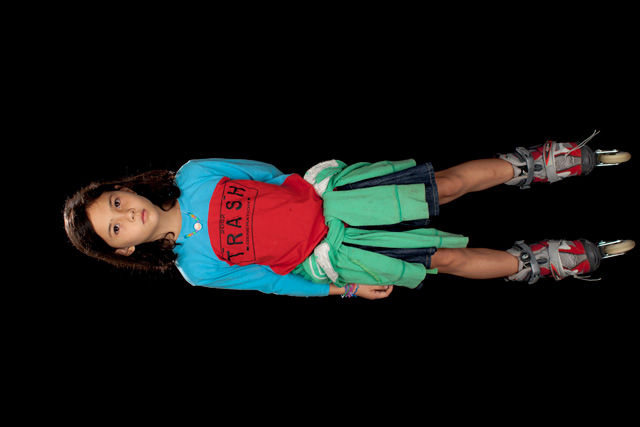
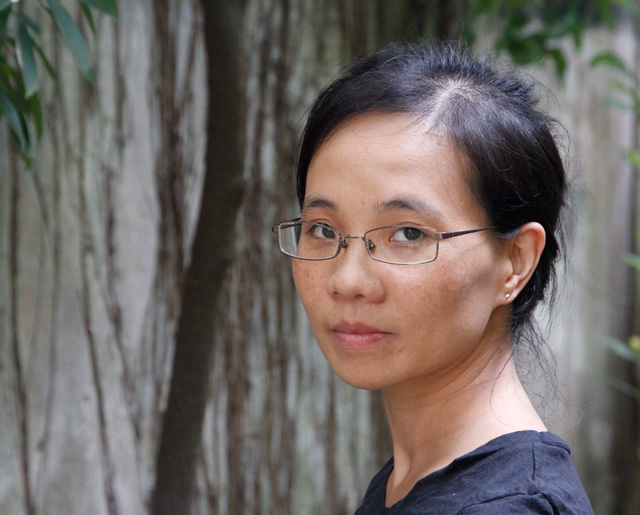
.jpg)
